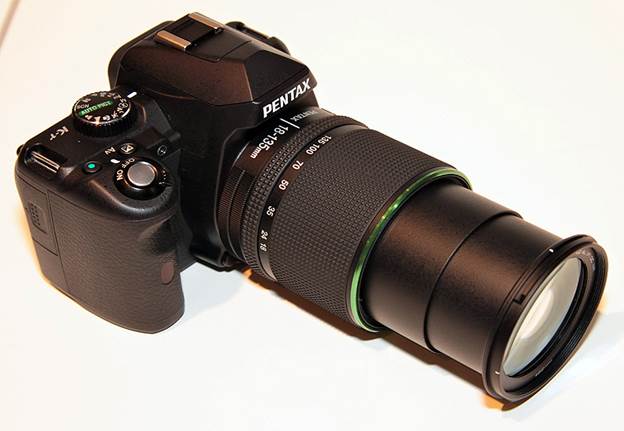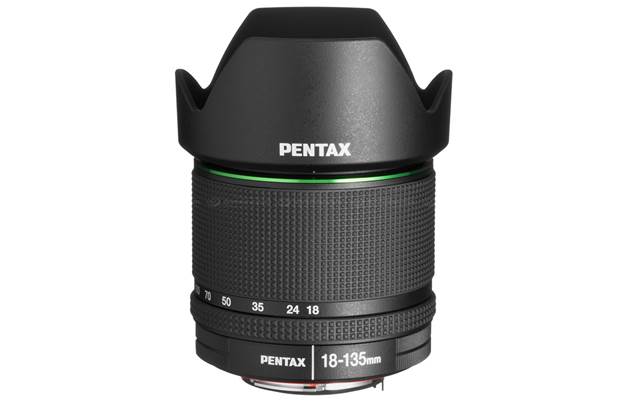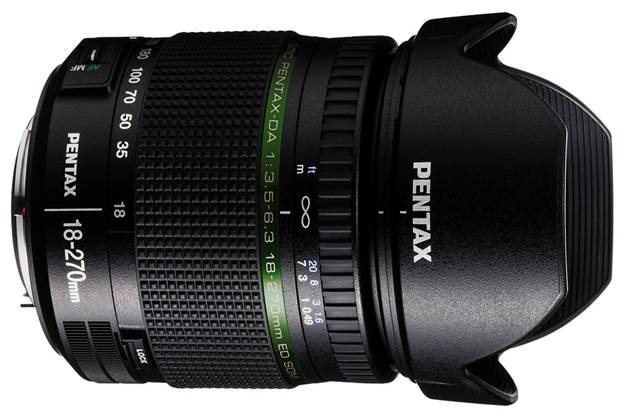The Pentax 18–135mm f/3.5-5.6ED AL (IF) DC WR comes with
an unusual suffi x for this price bracket. Ambarin Afsar fi nds out what it’s
about.
Offered as a kit companion to the Pentax K-3, K-50 and K-5
II bodies, the Pentax 18–135mm f/3.5-5.6ED AL IF DC WR is also stocked in
stores as a standalone lens. I have a certain affection for kit lenses. They
are every photographer’s go-to lens when one is just starting out. These lenses
take quite a beating and after awhile, are usually retired to the back of the
cabinet as the photographer’s kit expands.
I think that these lenses are used to take the maximum
number of risks, and that’s why it’s such a good thing that the Pentax 18–135mm
lens is weather-resistant. The WR moniker means that it has six seals an a
water and dust repellant coating on the front element.
Why should it matter whether or not a kit lens like the
18–135mm is weather resistant? Well, just that feature alone would have raised
the price of any lens by several thousand rupees.
There is no other lens in this category, and at this price
point (Rs. 30,000–35,000) that offers weather resistence. And when coupled with
the weather-resistant Pentax bodies, a lens with a significant amount of reach
becomes an added advantage. Or does it?

Offered as a kit
companion to the Pentax K-3, K-50 and K-5 II bodies, the Pentax 18–135mm
f/3.5-5.6ED AL IF DC WR is also stocked in stores as a standalone lens.
Features
Made specifically for APS-C Pentax mounts, the 18–135mm
offers an effective field of view of approximately 28–200mm, with the usual
maximum aperture range of f/3.5-5.6. It features quick-shift manual focusing as
well as internal focusing and the front lens element does not rotate, allowing
users to make use of polarising or graduated filters in the thread. The lens is
made of 13 elements in 11 groups.
While the lens has a MF mode enabled by a switch, full-time
MF override is enabled by simply rotating the focus ring. The closest focusing
distance is 0.4m, which is good, but not out of the ordinary. There is no image
stabilisation because all of Pentax’s cameras have in-body stabilisation.
Handling
What I liked about this lens was that it is quite light and
compact. In fact, it seemed lighter and smaller than the Nikkor 18–105mm, a
lens that I have spent a few years using. Turns out, it is just 20g lighter.
Featuring a mix of metal and plastic body elements, the lens feels quite sturdy
and can easily withstand the knocks that any kit lens is prone to receive
during its lifetime.
My only grouse was with the thin manual focus ring. I found
it a little too close to the top portion of the K-3 (the body that I tested the
lens with), which houses the flash. Besides the two rings, the lens features no
other controls, and the absence of a distance or DOF scale makes the lens look
quite bare. The zoom ring is where all the attention’s been given. It rotates
smoothly, and the resistance is just right.

it seemed lighter
and smaller than the Nikkor 18–105mm, a lens that I have spent a few years
using. Turns out, it is just 20g lighter.
Performance
As long as you stick to stopping down the lens across the
zoom range, you will end up with sharp results, with some soft corners. When
the lens is thrown wide open at 18mm, it produces some pretty soft corners.
However, centre sharpness is great all the way to 50mm. I’d say the sweet spot
of this lens is about 35mm at f/8. Basically, shooting at f/8 towards the
telephoto end of the focal range is a good idea.
However, at 100mm and above, centre sharpness takes a
downturn and you are stuck with images that aren’t as sharp as they could have
been, regardless of the aperture you use. I would advise against stopping down
the lens beyond f/11 at any end of the zoom range.
Conclusion
Priced at Rs. 36,300, this is certainly no beginner’s kit
lens, but rather for the serious enthusiast who doesn’t mind spending money for
the added feature of weather resistance. However, what bothers me about this
lens is its optical performance. At this price point, such an average delivery
is really something I wasn’t expecting. If you already have a Pentax kit with
the 18–55mm, and you want weather-resistance all around, you’d do better to
simply get the 50–200mm, which is a far sharper lens. However, you would be
saddled with having to change lenses. Alternatively, if you are comfortable
with third-party options, you can get more reach for a lesser price with the
Sigma 18–200mm f/3.5-6.3 DC OS HSM.

if you are
comfortable with third-party options, you can get more reach for a lesser price
with the Sigma 18–200mm f/3.5-6.3 DC OS HSM.